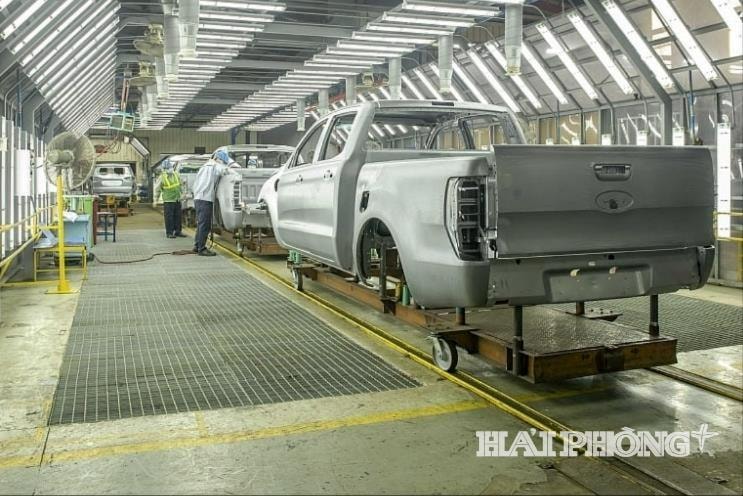The merger of Hai Duong province with Hai Phong city not only streamlined the apparatus but also unlocked new potential for attracting foreign direct investment (FDI) into the new city.

Preferred destination for new projects
Even before the merger, both Hai Phong and Hai Duong had recorded notable achievements in attracting FDI.
In June 2025, Innox Ecom Vina Co., Ltd. inaugurated its silicon anode material production project in Nam Dinh Vu free trade and industrial zone, part of Dinh Vu – Cat Hai Economic Zone in Hai Phong city.
With a total investment of 20 million USD, the 6,000 m² facility is expected to have an annual capacity of 800 tons, with all output destined for export to Europe and America.
In Hai Duong, at the end of September 2024, China's Deli Group broke ground on a stationery manufacturing plant in the expanded Dai An industrial park. Covering an area of more than 21 ha with an investment of 270 million USD, this is the group’s largest FDI project in Vietnam.
The plant, set to begin operations by late 2026, is expected to produce over 104 million items annually, create jobs for around 3,000 workers, and generate an estimated 5 million USD in annual revenue.
.jpeg)
In the first half of 2025, Hai Duong attracted a total of 405.4 million USD in FDI, up 117% year on year. This included 175.5 million USD of 26 new projects and 224.7 million USD of 35 existing ones.
During the same period, Hai Phong recorded 1.085 billion USD in FDI, reaffirming its status as a prime destination for international investors.
Prior to the merger, Hai Phong had over 1,000 FDI projects from 42 countries and territories, with total registered capital of nearly 34 billion USD. Hai Duong had more than 600 FDI projects totaling over 11 billion USD from 27 countries and territories.
Unified territory, multiplied opportunities
Post-merger, the total FDI poured into the new Hai Phong city reached nearly 45 billion USD across more than 1,600 projects. This not only demonstrates robust growth potential but also shows that the merger is more than just a territorial unification but a multiplier of opportunity, enhancing the city’s appeal for future FDI inflows.
.png)
Recently, the National Assembly has approved the establishment of a free trade zone in Hai Phong, which comes with a host of special incentives: four years of tax exemption, 50% tax reduction for the next nine years, and a 10% corporate tax rate for 30 years for priority sectors such as research and development, high technology, and semiconductors.
An extensive transportation network has been formed, including key routes like Ha Noi – Hai Phong expressway, Gia Lam – Hai Phong railway, and National Highways 5, 37, 37B, and 17. This connectivity supports the development of a continuous industrial-service corridor, enhances competitiveness in logistics, and reduces production costs for investors.
Hai Phong’s seaport system, especially the Lach Huyen deep-water terminal cluster, serves as the primary gateway for import-export activities in northern Vietnam. Around 80% of goods and agricultural products from the former Hai Duong province were routed through this port. Post-merger, this logistics “home ground” will serve an even broader economic region, offering significant export advantages for regional businesses.
The city’s infrastructure, especially roads, workshops, and warehouses, is well-positioned to meet production and business needs of enterprises.
Hai Phong has been trying to improve its investment and business environment by fostering transparency and fairness, taking administrative reform as the driving force of development, accelerating procedure digitalization, and reducing processing times for investment-related applications.
With the strong foundations laid by both localities prior to the merger, combined with the strategic alignment of land, labor, capital, and infrastructure, the new Hai Phong city is poised to open up vast new space for FDI attraction. The city will definitely become the “FDI capital” of northern Vietnam.
HA VY